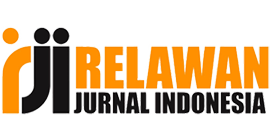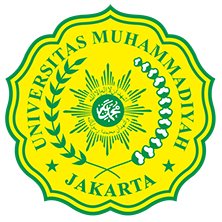- Focus and Scope
- Section Policies
- Peer Review Process
- Publication Frequency
- Open Access Policy
- Archiving
- Plagiarism Policy
- Open Access Statement
- Copyright and License Statement
- Article Processing Charge (APC)
- Journal Ethic Statement
- Abstracting and Indexing
- Dealing Of Misconduct
- Editorial Policy
Focus and Scope
This journal is a scientific journal to develop knowledge in the field of Applied Science & Advanced Technology. Editors invite professionals from education and researcher to write about the progress of science in the field ofApplied Science & Advanced Technology. The journal is published 3 (Three) times in 1 year.
Topics of papers that can be published in the Journal of Applied Science and Advanced Technology (JASAT) Faculty of Engineering, Universitas Muhammadiyah Jakarta is scientific topics that correspond to areas of interest in the Faculty of Engineering are:
a. Applied Science (Physics, Chemistry, Biology and Science Relevant)
b. Advanced Technology (Civil Engineering; Electrical Engineering; Chemical Engineering; Mechanical engineering; Industrial Engineering; Architecture; Informatics Engineering; Automotive Engineering and Heavy Equipment; Technology Relevant)
Section Policies
Articles
Peer Review Process
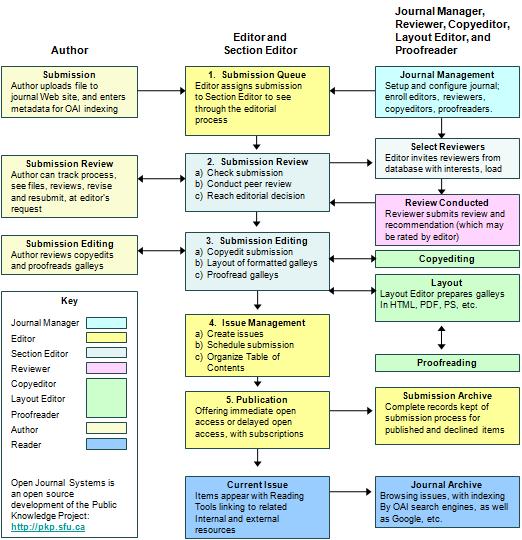
Publication Frequency
Periodic journal published every year, in April, August, and December.
Open Access Policy
This journal provides immediate open access to its content on the principle that making research freely available to the public supports a greater global exchange of knowledge.
Archiving
This journal utilizes the LOCKSS system to create a distributed archiving system among participating libraries and permits those libraries to create permanent archives of the journal for purposes of preservation and restoration. More...
Plagiarism Policy
The Journal of Applied Sciences and Advanced Technology Universitas Muhammadiyah Jakarta, Editorial board recognizes that plagiarism is not acceptable and therefore establishes the following policy stating specific actions (penalties) when plagiarism is identified in an article that is submitted for publication in Jurnal Teknologi.
Definition:
Plagiarism involves the "use or close imitation of the language and thoughts of another author and the representation of them as one's own original work."
Policy:
Papers must be original, unpublished, and not pending publication elsewhere. Any material taken verbatim from another source needs to be clearly identified as different from the present original text by (1) indentation, (2) use of quotation marks, and (3) identification of the source.
Any text of an amount exceeding fair use standards (herein defined as more than two or three sentences or the equivalent thereof) or any graphic material reproduced from another source requires permission from the copyright holder and, if feasible, the original author(s) and also requires identification of the source; e.g., previous publication.
When plagiarism is identified, the Editor in Chief responsible for the review of this paper and will agree on measures according to the extent of plagiarism detected in the paper in agreement with the following guidelines:
Level of Plagiaris
1.Minor :
A short section of another article is plagiarized without any significant data or idea taken from the other paper
Action : A warning is given to the authors and a request to change the text and properly cite the original article is made
2.Intermediate: A significant portion of a paper is plagiarized without proper citation to the original paper
Action: The submitted article is rejected and the authors are forbidden to submit further articles for one year
3. Severe : A significant portion of a paper is plagiarized that involves reproducing original results or ideas presented in another publication
Action: The paper is rejected and the authors are forbidden to submit further articles for five years.
It is understood that all authors are responsible for the content of their submitted paper as they all sign the Jurnal Teknologi Copyright Transfer Form. If a penalty is imposed for plagiarism, all authors will be subject to the same penalty.
If a second case of plagiarism by the same author(s) is identified, a decision on the measures to be enforced will be made by the Editorial board (Editor-in-Chief, and Editorial members) with the Chair of the Editor in Chief. The author(s) might be forbidden to submit further articles forever.
This policy applies also to material reproduced from another publication by the same author(s). If an author uses text or figures that have previously been published, the corresponding paragraphs or figures should be identified and the previous publication referenced. It is understood that in case of a review paper or a paper of a tutorial nature much of the material was previously published.
The author should identify the source of the previously published material and obtain permission from the original author and the publisher. If an author submits a manuscript to Jurnal Teknologi with significant overlap with a manuscript submitted to another journal simultaneously, and this overlap is discovered during the review process or after the publications of both papers, the editor of the other journal is notified and the case is treated as a severe plagiarism case. Significant overlap means use of identical or almost identical figures and identical or slightly modified text for one half or more of the paper. For self plagiarism of less than one half of the paper but more than one tenth of the paper, the case shall be treated as intermediate plagiarism. If self plagiarism is confined to the methods section, the case shall be considered as minor plagiarism.
If an author uses some of his previously published material to clarify the presentation of new results, the previously published material shall be identified and the difference to the present publication shall be mentioned. Permission to republish must be obtained from the copyright holder. In the case of a manuscript that was originally published in conference proceedings and then is submitted for publication in Jurnal Teknologi either in identical or in expanded form, the authors must identify the name of the conference proceedings and the date of the publication and obtain permission to republish from the copyright holder. The editor may decide not to accept this paper for publication.
However, an author shall be permitted to use material from an unpublished presentation, including visual displays, in a subsequent journal publication. In the case of a publication being submitted that was originally published in another language, the title, date and journal of the original publication must be identified by the authors, and the copyright must be obtained. The editor may accept such a translated publication to bring it to the attention of a wider audience. The editor may select a specific paper that had been published (e.g. a “historic” paper) for republication in order to provide a better perspective of a series of papers published in one issue of Jurnal Teknologi. This republication shall be clearly identified as such and the date and journal of the original publication shall be given, and the permission of the author(s) and the publisher shall be obtained.
The Journal of Applied Sciences and Advanced Technology layout editor for the Journal is responsible for maintaining the list of authors subjected to penalties and will check that no authors of a submitted paper are on this list. If a banned author is identified, the layout editor will inform the Editor-in-Chief who will take appropriate measures. This policy will be posted on the web site with the instructions for submitting a manuscript, and a copy will be sent to the authors with the confirmation email upon initial receipt of their original manuscript. A sentence shall be added to the copyright transfer form to indicate that the author(s) have read the Plagiarism Policy.
Open Access Statement
Journal of Applied Sciences and Advanced Technology publishes fully open access journals, which means that all articles are available on the internet to all users immediately upon publication. Non-commercial use and distribution in any medium is permitted, provided the author and the journal are properly credited.
Benefits of open access for authors, include:
- Free access for all users worldwide
- Authors retain copyright to their work
- Increased visibility and readership
- Rapid publication
- No spatial constraints
Copyright and License Statement
Authors who publish with this journal agree to the following terms:
- Authors retain copyright and grant the journal right of first publication with the work simultaneously licensed under a Creative Commons Attribution License that allows others to share the work with an acknowledgement of the work's authorship and initial publication in this journal.
- Authors are able to enter into separate, additional contractual arrangements for the non-exclusive distribution of the journal's published version of the work (e.g., post it to an institutional repository or publish it in a book), with an acknowledgement of its initial publication in this journal.
- Authors are permitted and encouraged to post their work online (e.g., in institutional repositories or on their website) prior to and during the submission process, as it can lead to productive exchanges, as well as earlier and greater citation of published work (See The Effect of Open Access).
License Grant. Subject to the terms and conditions of this License, Licensor hereby grants You a worldwide, royalty-free, non-exclusive, perpetual (for the duration of the applicable copyright) license to exercise the rights in the Work as stated below:
- to Reproduce the Work, to incorporate the Work into one or more Collections, and to Reproduce the Work as incorporated in the Collections;
- to create and Reproduce Adaptations provided that any such Adaptation, including any translation in any medium, takes reasonable steps to clearly label, demarcate or otherwise identify that changes were made to the original Work. For example, a translation could be marked "The original work was translated from English to Spanish," or a modification could indicate "The original work has been modified.";
- to Distribute and Publicly Perform the Work including as incorporated in Collections; and,
- to Distribute and Publicly Perform Adaptations.
- For the avoidance of doubt:i. Non-waivable Compulsory License Schemes. In those jurisdictions in which the right to collect royalties through any statutory or compulsory licensing scheme cannot be waived, the Licensor reserves the exclusive right to collect such royalties for any exercise by You of the rights granted under this License;ii. Waivable Compulsory License Schemes. In those jurisdictions in which the right to collect royalties through any statutory or compulsory licensing scheme can be waived, the Licensor waives the exclusive right to collect such royalties for any exercise by You of the rights granted under this License; and,iii. Voluntary License Schemes. The Licensor waives the right to collect royalties, whether individually or, in the event that the Licensor is a member of a collecting society that administers voluntary licensing schemes, via that society, from any exercise by You of the rights granted under this License.
The above rights may be exercised in all media and formats whether now known or hereafter devised. The above rights include the right to make such modifications as are technically necessary to exercise the rights in other media and formats. Subject to Section 8(f), all rights not expressly granted by Licensor are hereby reserved.
Restrictions. The license granted in Section 3 above is expressly made subject to and limited by the following restrictions:
- You may Distribute or Publicly Perform the Work only under the terms of this License. You must include a copy of, or the Uniform Resource Identifier (URI) for, this License with every copy of the Work You Distribute or Publicly Perform. You may not offer or impose any terms on the Work that restrict the terms of this License or the ability of the recipient of the Work to exercise the rights granted to that recipient under the terms of the License. You may not sublicense the Work. You must keep intact all notices that refer to this License and to the disclaimer of warranties with every copy of the Work You Distribute or Publicly Perform. When You Distribute or Publicly Perform the Work, You may not impose any effective technological measures on the Work that restrict the ability of a recipient of the Work from You to exercise the rights granted to that recipient under the terms of the License. This Section 4(a) applies to the Work as incorporated in a Collection, but this does not require the Collection apart from the Work itself to be made subject to the terms of this License. If You create a Collection, upon notice from any Licensor You must, to the extent practicable, remove from the Collection any credit as required by Section 4(b), as requested. If You create an Adaptation, upon notice from any Licensor You must, to the extent practicable, remove from the Adaptation any credit as required by Section 4(b), as requested.
- If You Distribute, or Publicly Perform the Work or any Adaptations or Collections, You must, unless a request has been made pursuant to Section 4(a), keep intact all copyright notices for the Work and provide, reasonable to the medium or means You are utilizing: (i) the name of the Original Author (or pseudonym, if applicable) if supplied, and/or if the Original Author and/or Licensor designate another party or parties (e.g., a sponsor institute, publishing entity, journal) for attribution ("Attribution Parties") in Licensor's copyright notice, terms of service or by other reasonable means, the name of such party or parties; (ii) the title of the Work if supplied; (iii) to the extent reasonably practicable, the URI, if any, that Licensor specifies to be associated with the Work, unless such URI does not refer to the copyright notice or licensing information for the Work; and (iv) , consistent with Section 3(b), in the case of an Adaptation, a credit identifying the use of the Work in the Adaptation (e.g., "French translation of the Work by Original Author," or "Screenplay based on original Work by Original Author"). The credit required by this Section 4 (b) may be implemented in any reasonable manner; provided, however, that in the case of a Adaptation or Collection, at a minimum such credit will appear, if a credit for all contributing authors of the Adaptation or Collection appears, then as part of these credits and in a manner at least as prominent as the credits for the other contributing authors. For the avoidance of doubt, You may only use the credit required by this Section for the purpose of attribution in the manner set out above and, by exercising Your rights under this License, You may not implicitly or explicitly assert or imply any connection with, sponsorship or endorsement by the Original Author, Licensor and/or Attribution Parties, as appropriate, of You or Your use of the Work, without the separate, express prior written permission of the Original Author, Licensor and/or Attribution Parties.
- Except as otherwise agreed in writing by the Licensor or as may be otherwise permitted by applicable law, if You Reproduce, Distribute or Publicly Perform the Work either by itself or as part of any Adaptations or Collections, You must not distort, mutilate, modify or take other derogatory action in relation to the Work which would be prejudicial to the Original Author's honor or reputation. Licensor agrees that in those jurisdictions (e.g. Japan), in which any exercise of the right granted in Section 3(b) of this License (the right to make Adaptations) would be deemed to be a distortion, mutilation, modification or other derogatory action prejudicial to the Original Author's honor and reputation, the Licensor will waive or not assert, as appropriate, this Section, to the fullest extent permitted by the applicable national law, to enable You to reasonably exercise Your right under Section 3(b) of this License (right to make Adaptations) but not otherwise.
Representations, Warranties and Disclaimer
UNLESS OTHERWISE MUTUALLY AGREED TO BY THE PARTIES IN WRITING, LICENSOR OFFERS THE WORK AS-IS AND MAKES NO REPRESENTATIONS OR WARRANTIES OF ANY KIND CONCERNING THE WORK, EXPRESS, IMPLIED, STATUTORY OR OTHERWISE, INCLUDING, WITHOUT LIMITATION, WARRANTIES OF TITLE, MERCHANTIBILITY, FITNESS FOR A PARTICULAR PURPOSE, NONINFRINGEMENT, OR THE ABSENCE OF LATENT OR OTHER DEFECTS, ACCURACY, OR THE PRESENCE OF ABSENCE OF ERRORS, WHETHER OR NOT DISCOVERABLE. SOME JURISDICTIONS DO NOT ALLOW THE EXCLUSION OF IMPLIED WARRANTIES, SO SUCH EXCLUSION MAY NOT APPLY TO YOU.
Limitation on Liability. EXCEPT TO THE EXTENT REQUIRED BY APPLICABLE LAW, IN NO EVENT WILL LICENSOR BE LIABLE TO YOU ON ANY LEGAL THEORY FOR ANY SPECIAL, INCIDENTAL, CONSEQUENTIAL, PUNITIVE OR EXEMPLARY DAMAGES ARISING OUT OF THIS LICENSE OR THE USE OF THE WORK, EVEN IF LICENSOR HAS BEEN ADVISED OF THE POSSIBILITY OF SUCH DAMAGES.
Termination
- This License and the rights granted hereunder will terminate automatically upon any breach by You of the terms of this License. Individuals or entities who have received Adaptations or Collections from You under this License, however, will not have their licenses terminated provided such individuals or entities remain in full compliance with those licenses. Sections 1, 2, 5, 6, 7, and 8 will survive any termination of this License.
- Subject to the above terms and conditions, the license granted here is perpetual (for the duration of the applicable copyright in the Work). Notwithstanding the above, Licensor reserves the right to release the Work under different license terms or to stop distributing the Work at any time; provided, however that any such election will not serve to withdraw this License (or any other license that has been, or is required to be, granted under the terms of this License), and this License will continue in full force and effect unless terminated as stated above.
Miscellaneous
- Each time You Distribute or Publicly Perform the Work or a Collection, the Licensor offers to the recipient a license to the Work on the same terms and conditions as the license granted to You under this License.
- Each time You Distribute or Publicly Perform an Adaptation, Licensor offers to the recipient a license to the original Work on the same terms and conditions as the license granted to You under this License.
- If any provision of this License is invalid or unenforceable under applicable law, it shall not affect the validity or enforceability of the remainder of the terms of this License, and without further action by the parties to this agreement, such provision shall be reformed to the minimum extent necessary to make such provision valid and enforceable.
- No term or provision of this License shall be deemed waived and no breach consented to unless such waiver or consent shall be in writing and signed by the party to be charged with such waiver or consent.
- This License constitutes the entire agreement between the parties with respect to the Work licensed here. There are no understandings, agreements or representations with respect to the Work not specified here. Licensor shall not be bound by any additional provisions that may appear in any communication from You. This License may not be modified without the mutual written agreement of the Licensor and You.
- The rights granted under, and the subject matter referenced, in this License were drafted utilizing the terminology of the Berne Convention for the Protection of Literary and Artistic Works (as amended on September 28, 1979), the Rome Convention of 1961, the WIPO Copyright Treaty of 1996, the WIPO Performances and Phonograms Treaty of 1996 and the Universal Copyright Convention (as revised on July 24, 1971). These rights and subject matter take effect in the relevant jurisdiction in which the License terms are sought to be enforced according to the corresponding provisions of the implementation of those treaty provisions in the applicable national law. If the standard suite of rights granted under applicable copyright law includes additional rights not granted under this License, such additional rights are deemed to be included in the License; this License is not intended to restrict the license of any rights under applicable law.
Article Processing Charge (APC)
This journal charges the following author fees.
Article Submission: 0.00 (IDR)
Authors are required to pay an Article Submission Fee as part of the submission process to contribute to review costs.
Article Publication: IDR 500.000 (For the Indonesian Corresponding Author) or USD 50 USD (For the International Corresponding Author).
If this paper is accepted for publication, you will be asked to pay an Article Publication Fee to cover publication costs.
Journal Ethic Statement
Duties of Authors
- Reporting Standards:
Authors of reports of original research should present an accurate account of the work performed as well as an objective discussion of its significance. Underlying data should be represented accurately in the paper. A paper should contain sufficient detail and references to permit others to replicate the work. Fraudulent or knowingly inaccurate statements constitute unethical behaviour and are unacceptable. - Data Access and Retention:
Authors are asked to provide the raw data in connection with a paper for editorial review, and should be prepared to provide public access to such data (consistent with the ALPSP-STM Statement on Data and Databases), if practicable, and should in any event be prepared to retain such data for a reasonable time after publication. - Originality and Plagiarism: The authors should ensure that they have written entirely original works, and if the authors have used the work and/or words of others that this has been appropriately cited or quoted.
- Multiple, Redundant or Concurrent Publication:
An author should not, in general, publish manuscripts describing essentially the same research in more than one journal or primary publication. Submitting the same manuscript to more than one journal concurrently constitutes unethical publishing behaviour and is unacceptable. - Acknowledgement of Sources:
Proper acknowledgement of the work of others must always be given. Authors should cite publications that have been influential in determining the nature of the reported work. - Authorship of the Paper:
Authorship should be limited to those who have made a significant contribution to the conception, design, execution, or interpretation of the reported study. All those who have made significant contributions should be listed as co-authors. Where there are others who have participated in certain substantive aspects of the research project, they should be acknowledged or listed as contributors. The corresponding author should ensure that all appropriate co-authors and no inappropriate co-authors are included on the paper and that all co-authors have seen and approved the final version of the paper and have agreed to its submission for publication. - Disclosure and Conflicts of Interest:
All authors should disclose in their manuscript any financial or another substantive conflict of interest that might be construed to influence the results or interpretation of their manuscript. All sources of financial support for the project should be disclosed. - Fundamental errors in published works:
When an author discovers a significant error or inaccuracy in his/her own published work, it is the author’s obligation to promptly notify the journal editor or publisher and cooperate with the editor to retract or correct the paper. - Hazards and Human or Animal Subjects:
If the work involves chemicals, procedures or equipment that have any unusual hazards inherent in their use, the author must clearly identify these in the manuscript.
Duties of Editors
- Fair Play:
An editor at any time evaluate manuscripts for their intellectual content without regard to race, gender, sexual orientation, religious belief, ethnic origin, citizenship, or political philosophy of the authors. - Confidentiality:
The editor and any editorial staff must not disclose any information about a submitted manuscript to anyone other than the corresponding author, reviewers, potential reviewers, other editorial advisers, and the publisher, as appropriate. - Disclosure and Conflicts of Interest:
Unpublished materials disclosed in a submitted manuscript must not be used in an editor's own research without the express written consent of the author. - Publication Decisions:
The editor board journal is responsible for deciding which of the articles submitted to the journal should be published. The validation of the work in question and its importance to researchers and readers must always drive such decisions. The editors may be guided by the policies of the journal's editorial board and constrained by such legal requirements as shall then be in force regarding libel, copyright infringement and plagiarism. The editors may confer with other editors or reviewers in making this decision. - Review of Manuscripts:
The editor must ensure that each manuscript is initially evaluated by the editor for originality. The editor should organise and use peer review fairly and wisely. Editors should explain their peer review processes in the information for authors and also indicate which parts of the journal are peer reviewed. The editor should use appropriate peer reviewers for papers that are considered for publication by selecting people with sufficient expertise and avoiding those with conflicts of interest.
Duties of Reviewers
- Contribution to Editorial Decisions:
Peer review assists the editor in making editorial decisions and through the editorial communications with the author may also assist the author in improving the paper. - Promptness:
Any selected referee who feels unqualified to review the research reported in a manuscript or knows that its prompt review will be impossible should notify the editor and excuse himself from the review process - Standards of Objectivity:
Reviews should be conducted objectively. Personal criticism of the author is inappropriate. Referees should express their views clearly with supporting arguments. - Confidentiality:
Any manuscripts received for review must be treated as confidential documents. They must not be shown to or discussed with others except as authorised by the editor. - Disclosure and Conflict of Interest:
Privileged information or ideas obtained through peer review must be kept confidential and not used for personal advantage. Reviewers should not consider manuscripts in which they have conflicts of interest resulting from competitive, collaborative, or other relationships or connections with any of the authors, companies, or institutions connected to the papers. - Acknowledgement of Sources:
Reviewers should identify relevant published work that has not been cited by the authors. Any statement that an observation, derivation, or argument had been previously reported should be accompanied by the relevant citation. A reviewer should also call to the editor's attention any substantial similarity or overlap between the manuscript under consideration and any other published paper of which they have personal knowledge.
Abstracting and Indexing
Journal of Applied Sciences and Advanced Technology (JASAT) Indexing By:
1. Google Scholar (https://scholar.google.co.id/)
2. Garuda (https://garuda.kemdikbud.go.id)
3. SINTA (https://sinta.kemdikbud.go.id/)
Dealing Of Misconduct
Editor-in-Chief considers retracting a publication if the following criteria
- They have clear evidence that the findings are unreliable, either because of a major error (e.g., miscalculation or experimental error), because of fabrication (e.g., of data), or falsification (e.g., image manipulation). It constitutes plagiarism
- The findings have previously been published elsewhere without proper attribution to previous sources or disclosure to the editor, permission to republish, or justification (i.e., cases of redundant publication). It contains material or data without authorization for use
- Copyright has been infringed, or there is some other legal severe issue (e.g. libel, privacy). It reports unethical research. It has been published solely based on a compromised or manipulated peer review process
- The author(s) failed to disclose a major conflict of interest that, in the editor's view, would have unduly affected interpretations of the work or recommendations by editors and peer reviewers.
Notices of retraction should
- Be linked to the retracted article wherever possible (i.e., in all online versions)
- Clearly identify the retracted article (e.g., by including the title and authors in the retraction heading or citing the retracted article)
- Be clearly identified as a retraction (i.e., distinct from other types of correction or comment)
- Be published promptly to minimize harmful effects
- Be freely available to all readers (i.e., not behind access barriers or available only to subscribers)
- State who is retracting the article
- State the reason(s) for retraction
- Be objective, factual and avoid inflammatory language
Retractions are not usually appropriate if
- The authorship is disputed, but there is no reason to doubt the validity of the findings
- The main findings of the work are still reliable, and corrections could sufficiently address errors or concerns
- An editor has inconclusive evidence to support retraction or is awaiting additional information such as from an institutional investigation
- Author conflicts of interest have been reported to the journal after publication, but in the editor's view, these are not likely to have influenced interpretations or recommendations or the conclusions of the article.
Editorial Policy
Published articles in peer-reviewed journals serve as critical components in the development of an organized and respected system of knowledge. Peer review is an essential component in maintaining high standards in academic publications. Single-blind (single anonymized review) peer review is used to evaluate manuscripts submitted for publication in the Journal of Mechanical Engineering and Sciences. The identities of the reviewers are not revealed to the author in this type of review.
All contributions will be initially assessed by the editor for suitability for the journal. Papers deemed suitable are then typically sent to a minimum of two independent expert reviewers to assess the scientific quality of the paper. The Editor is responsible for the final decision regarding the acceptance or rejection of articles. The Editor's decision is final. Editors are not involved in decisions about papers that they have written themselves or have been written by family members or colleagues or which relate to products or services in which the editor has an interest. Any such submission is subject to all the journal's usual procedures, with peer review handled independently of the relevant section editors.
Independent Reviewers are asked to evaluate the quality of the manuscript and to provide a recommendation on whether a manuscript can be accepted, requires revisions, or should be rejected. Peer review of a submitted manuscript is carried out while keeping in mind the scope of the manuscript as well as the expertise of the reviewers involved. Manuscripts are forwarded for evaluation to the Editor-in-Chief (EiC and Section Editors as well as external reviewers to check:
Originality: The submitted manuscript should be original and have the quality to contribute to the respective field of research.
Significance: Results should be interpreted appropriately and significantly. Conclusions must be justified and supported by the results.
Layout and Format: The formatting of the manuscript should be according to the Author's Guidelines.
Interest to the Readers: The manuscript should fall within the scope of the journal.
English Level: The English language must be appropriate and understandable.
Overall Merit: Overall benefit of publishing the paper.
Editors/Editorial board members may recommend the acceptance or rejection of a manuscript by conducting the peer-review themselves based on their own knowledge and experience. The Editor-in-Chief(s) may request assistance and advice from other subject matter experts. The peer review is completed once at least two independent reviewers send a detailed report with their comments on the manuscript and their recommendations. The types of decisions are categorized below:
Accept as it is: The manuscript is accepted in its original form. This kind of decision outcome is quite uncommon.
Accept with minor revisions: The paper is accepted for publication after minor modifications or adjustments.
Accept after major revisions: The manuscript is accepted after major amendments. Authors are requested to make major revisions and resolve technique errors, acquire more data, perform a more comprehensive analysis, or even modify the research question to ensure that the manuscript contributes something unique to the body of work.
Revise and resubmit: The journal is willing to reconsider the manuscript in a subsequent round of decision-making provided that the authors make significant revisions to their manuscript.
Reject the manuscript: The manuscript is rejected with no opportunity of resubmission to the journal due to major errors.
The comments of the reviewers are checked by the Editor-in-Chief. The review reports are modified by the Editor-in-Chief if the comments contain sensitive information or are written in a manner that is unsuitable for scholarly communication. This kind of comment should be included in the review form's confidential section, which is only accessible to editors.
Flow Chart of Reviewing Process
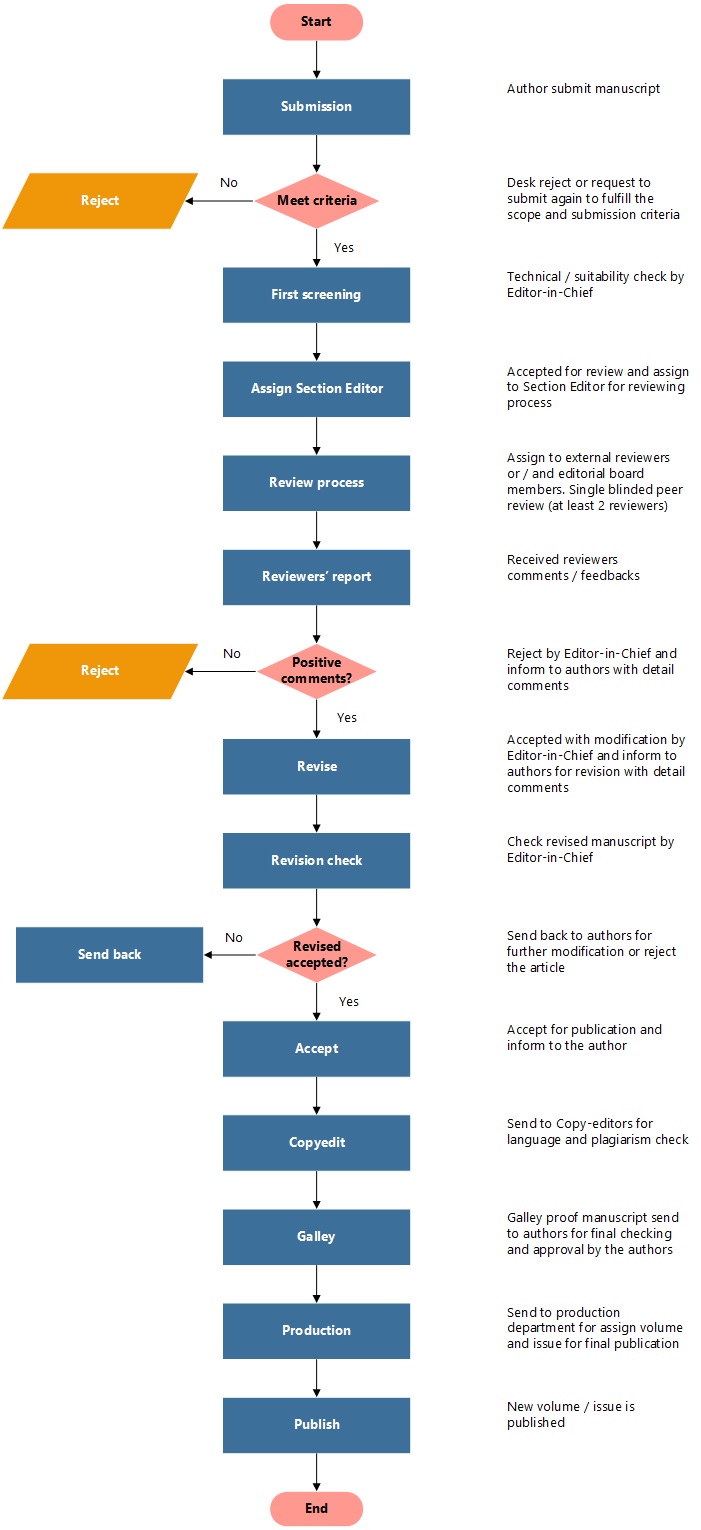












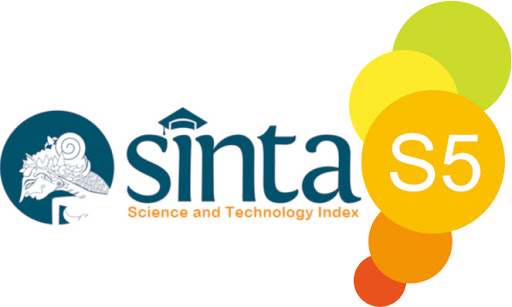


_2.png)
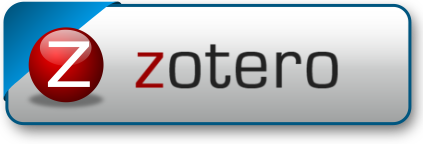
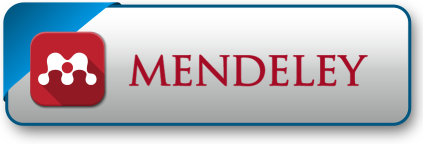
1.png)
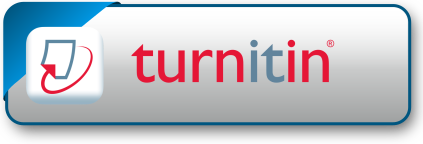
2.png)
